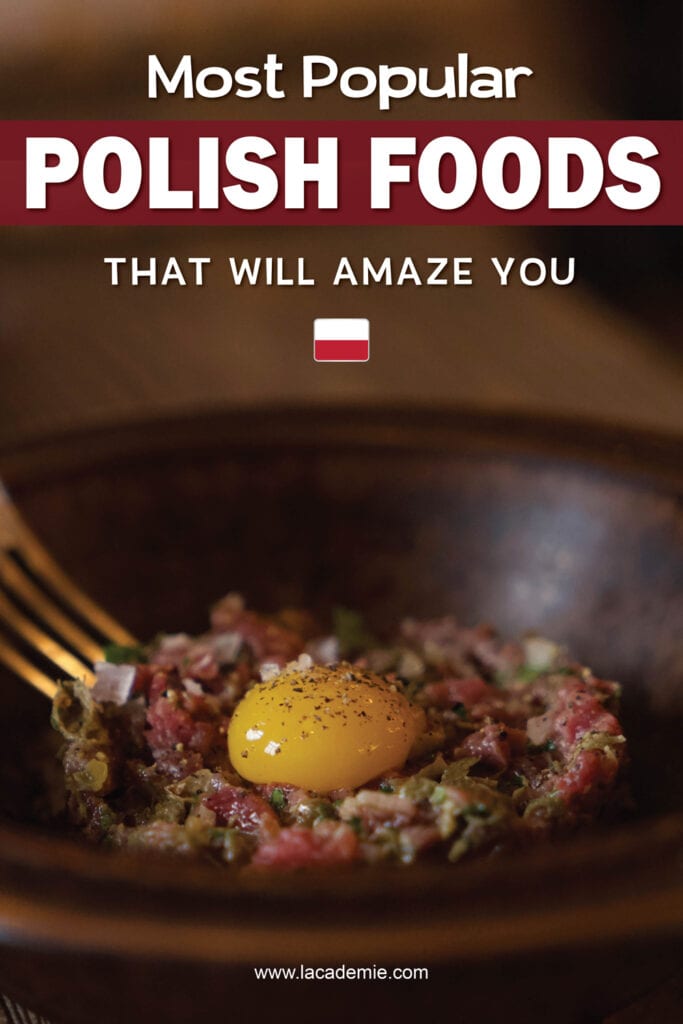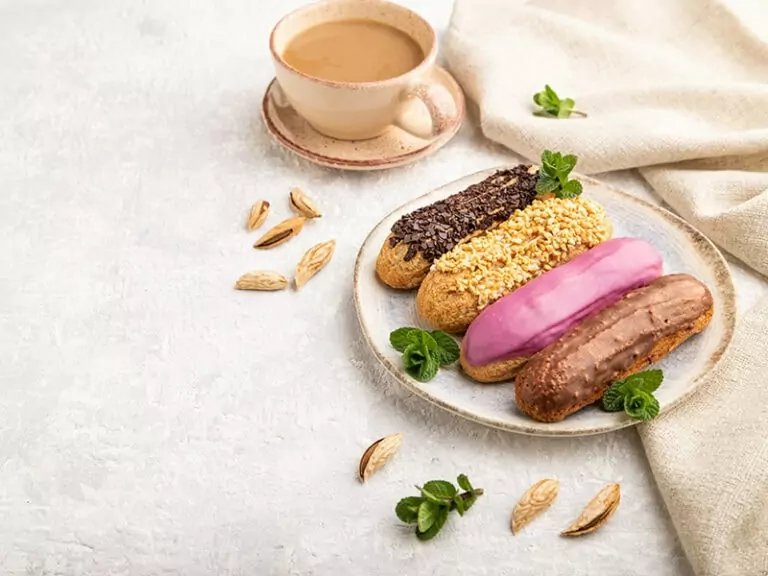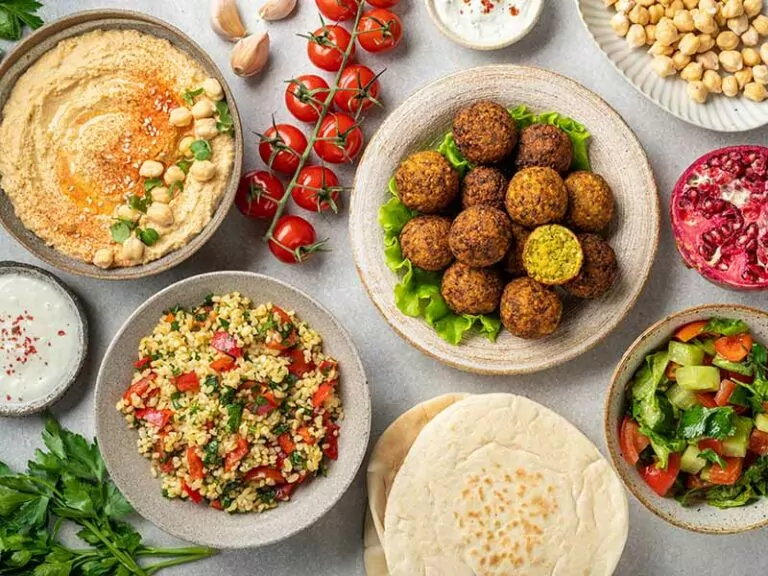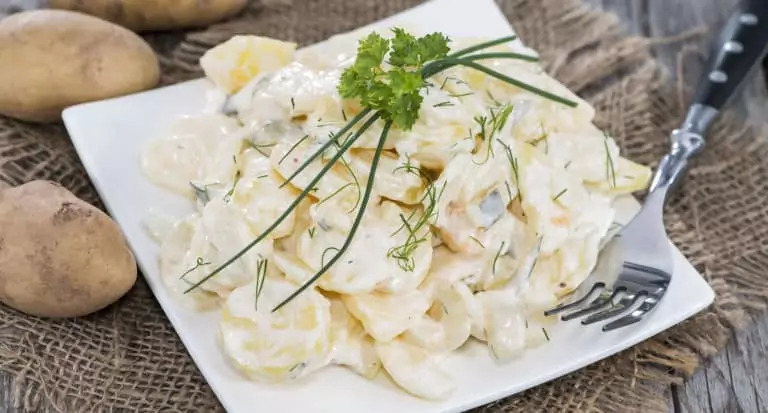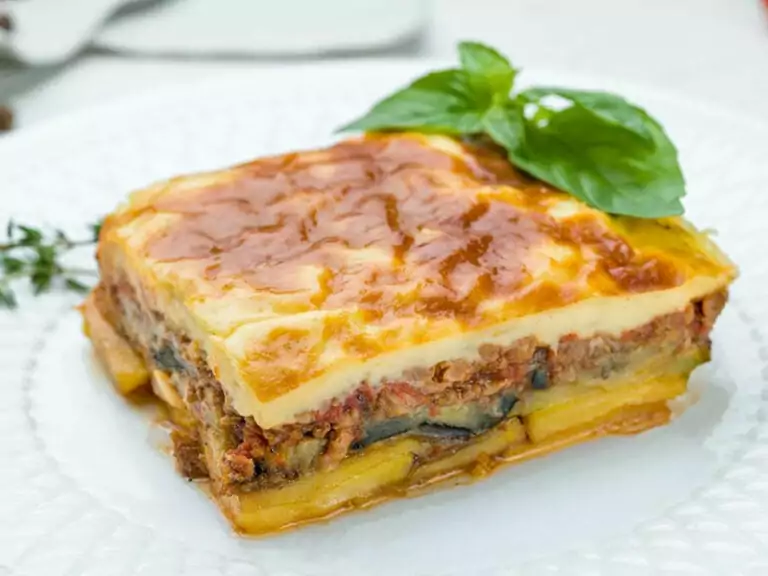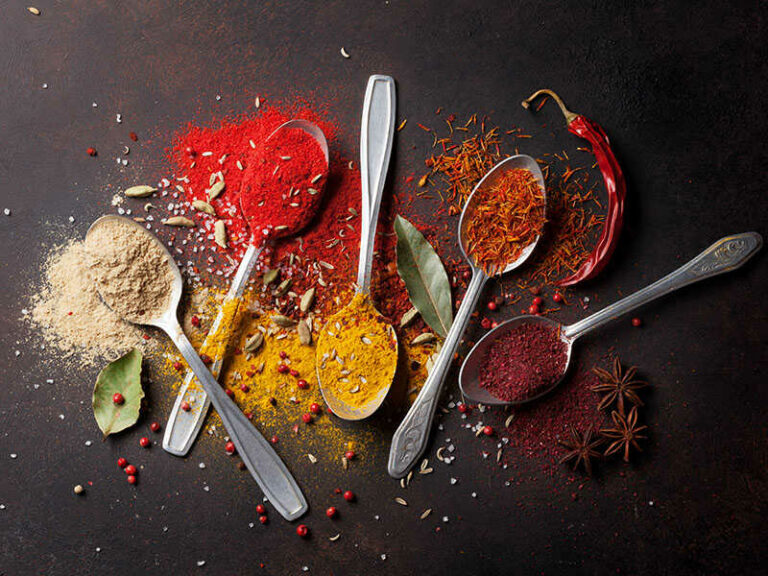It’s great to enjoy the signature Polish foods, don’t you think so? Your trip to Poland will be much more exciting. The key here is to pick the best dishes to try. If you haven’t come up with any choice, read this article and you will know what should be on your list.
The foods do not just deliver the flavor. Most of the time they reflect the tradition or history of the country. As you read through each dish, you will not just discover their tastes but the stories of how they were created. I promise that they will be interesting. Stay tuned!
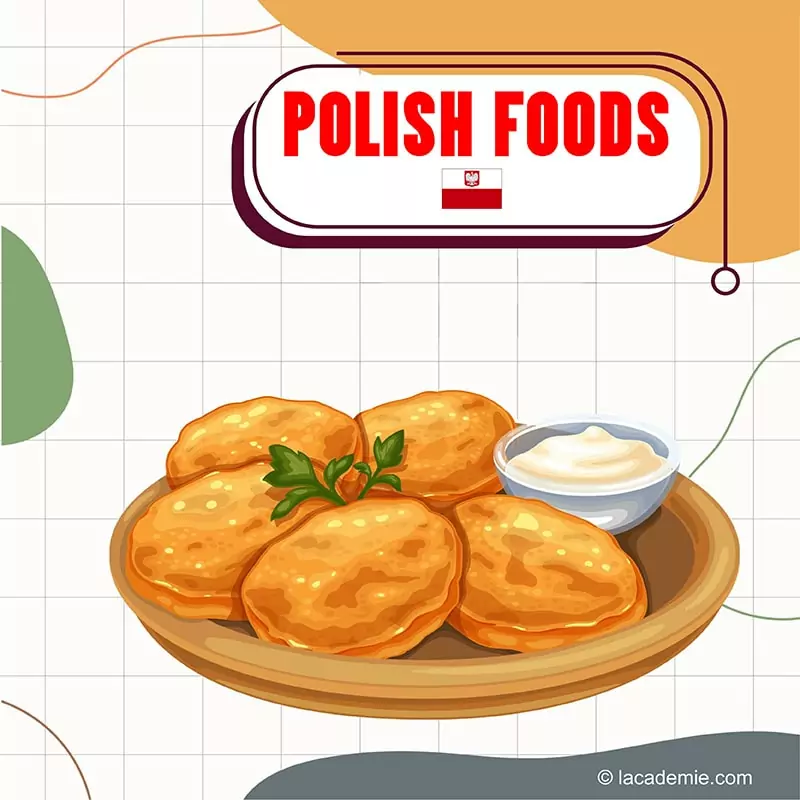
Polish Appetizers
A good meal starts with delicious appetizers. Luckily, in Poland, you have plenty of choices. Let me show you what the best ones are.
1. Pierogi (Dumplings)
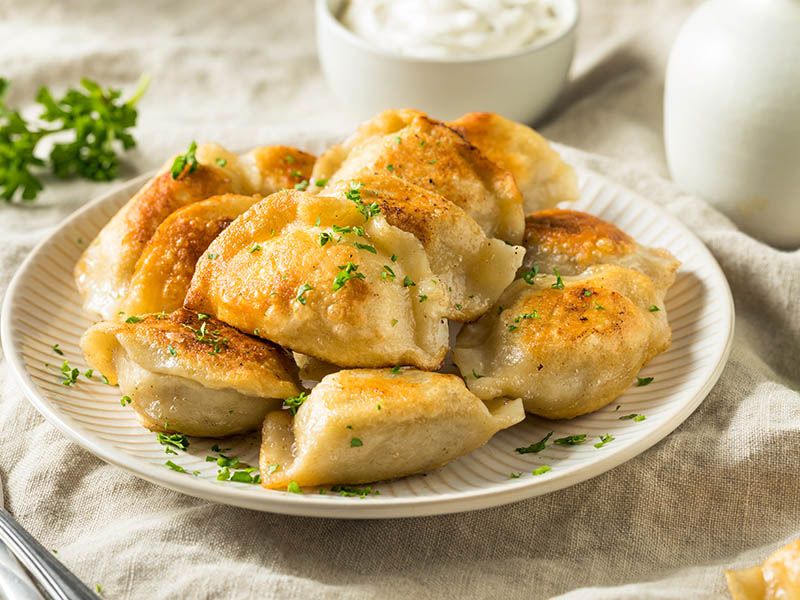
Pierogi is one of the national Polish recipes. It was brought to the country in the 13th century by either Chinese or European people. But its exact origin is still unexplored. It features dumplings that are stuffed with a sweet or savory filling.
Pierogi is an extremely popular street food in Poland. Traditionally, Polish people serve it on Easter and Christmas days. The fillings are often made from cabbage, sauerkraut, or mushroom.
In summer, people stuff it with seasonal fruits and berries. Pierogi is so versatile and diverse that you will always get a unique version anytime you try.
Pierogi can be baked, fried, or boiled. But Polish people prefer boiling it and top it with some butter and onions.
2. Placki Ziemniaczane (Potato Pancakes)
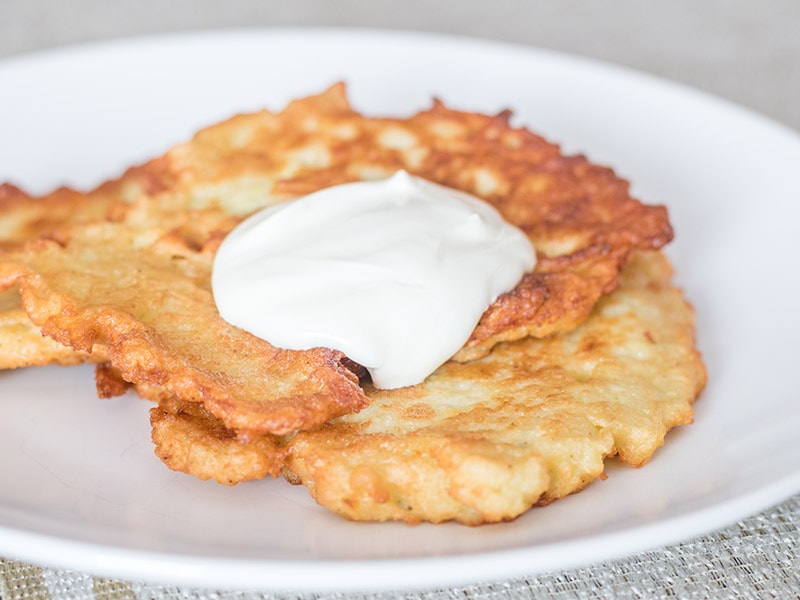
Every European country has a potato pancake recipe. Of course Poland also has one. Polish potato pancakes are called “Placki Ziemniaczane”. It first became popular in Polish monasteries in the 17th century.
Traditionally, it is made with eggs, wheat, salt, onion, and peppers. But this simple recipe creates delicate and versatile pancakes that can be enjoyed with every dish. Most often, people top it with some sour cream.
During the foreign patritions in the 19th century, Nigerian peasants often used low-quality potatoes to make pancakes so that they could keep it longer. These pancakes are used to replace bread. They also represent the Jewish people who resided in Poland.
Nowadays, this “P-something” food is served at Świt Plinzy, a celebration held in 2 days in the Rzechta village. People often make giant pancakes, the largest one is 2 meters and 2 centimeters.
Also, they also play a game called “tongue-in-cheek”, which involves throwing spoiled Placki. The longest distance is 29 meters.
3. Befszytk Tatarski (Steak Tartare)
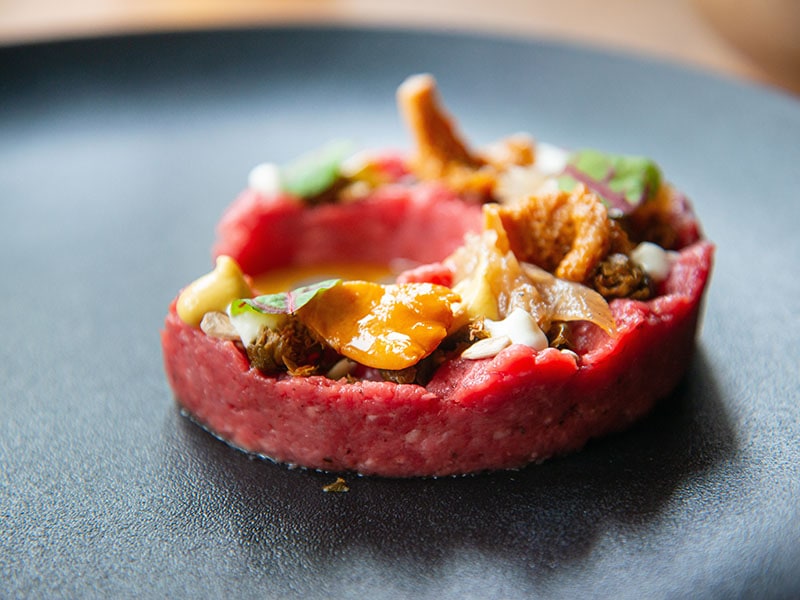
This Mongolian food is a famous appetizer not only in Poland but also in other European countries. It is named after the Tartas, the Mongolian nomadic horsemen. Steak Tartare is incredibly delicious, but it is not for everyone.
Believe it or not, this Polish delicacy is made from raw meat and eggs. It has a fancy and elegant look and a unique taste that you can never find in any other dish. I highly recommend it as a Polish lunch dish if you can eat raw meat. Its flavor will never be boring.
Polish Main Dishes
Have you found any main dish to enjoy at your Polish party? If you haven’t, I have some suggestions for you. Check them out!
4. Golabki (Stuffed Cabbage Rolls)

Stuffed cabbage rolls are common in many cuisines. Although many people associated Golabki with Poland, it actually did not come from the country. It is unsure whether it originated in Turkey, Germany, Sweden, or even Russia.
In Poland, Golabki features cabbage wraps filled with minced beef or pork. They are cooked in a delicious tomato sauce, resulting in tender and flavorful rolls that will fit anyone’s appetite.
Golabki is a funny name, it means “dove” in the Ukrainian language, but there is no bird in the ingredient. The Polish adopted that name because in the cuisine of Ukraine, this very same dish is stuffed with dove meat instead.
5. Kotlet Schabowy (Breaded Pork Cutlets)
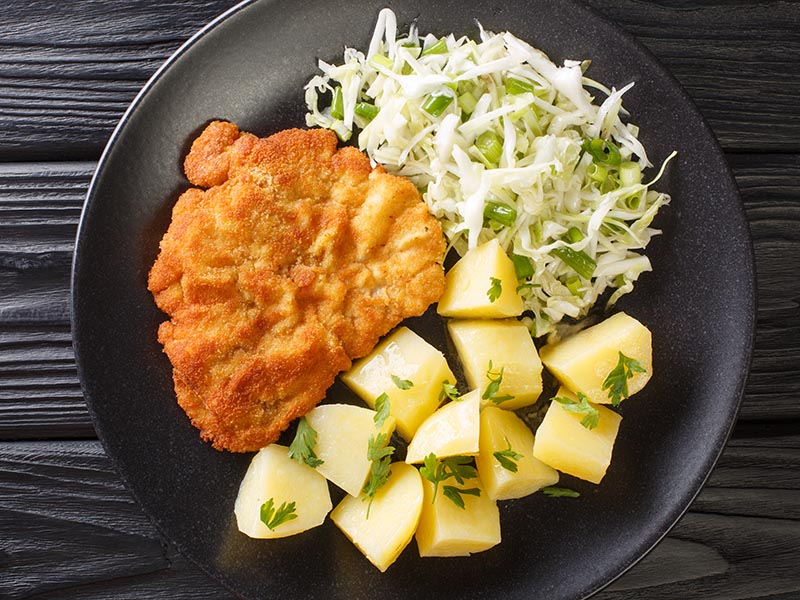
Kotlet Schabowy is a variation of an Australian dish named Wiener Schnitzel. It was brought to Poland in the 19th century. The original version is made from veal, but Polish people use pork instead.
To make this dish, people coat the pork chop in the mixture of all-purpose flour and breadcrumbs and fry it until perfection. Then, they serve it with applesauce and potatoes. Kotlet Schabowy is the top choice for Sunday dinner in Poland.
You can find Kotlet Schabowy at any restaurant across Poland. However, if you want to try the authentic version, come to bar mleczny or milk bar.
6. Gulasz (Pork Stew)
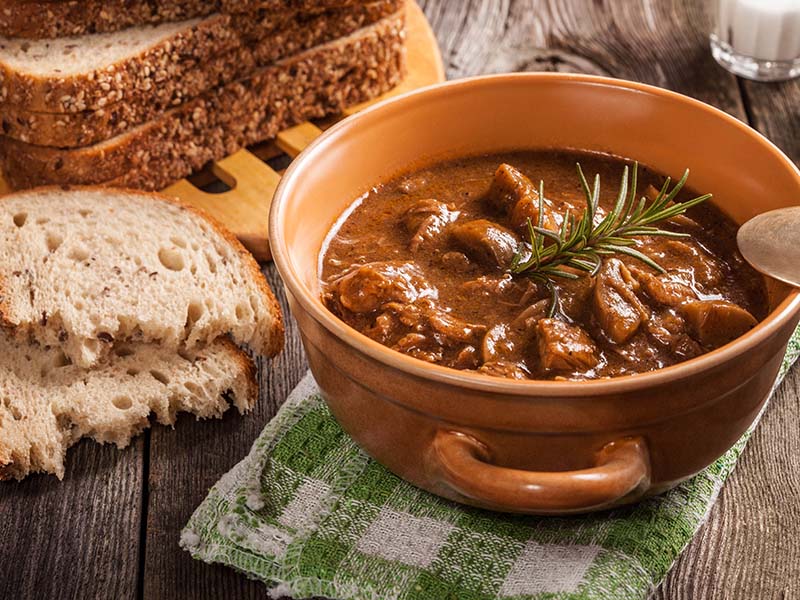
Gulasz (or Goulash) is originally a Hungarian dish created in the 9th century by Hungarian shepherds. Later on, it has gained popularity in nearby countries, including Poland. Now it is a common Polish dinner dish.
There are 2 versions of Gulasz. The first one is made from pork, and the other contains beef. People cook the meat with mushrooms, bell peppers, onions, carrots, and paprika, creating a thick and savory stew that everyone falls for. Polish people love to enjoy it with potato pancakes.
7. Kluski Slaskie (Silesian Dumplings)
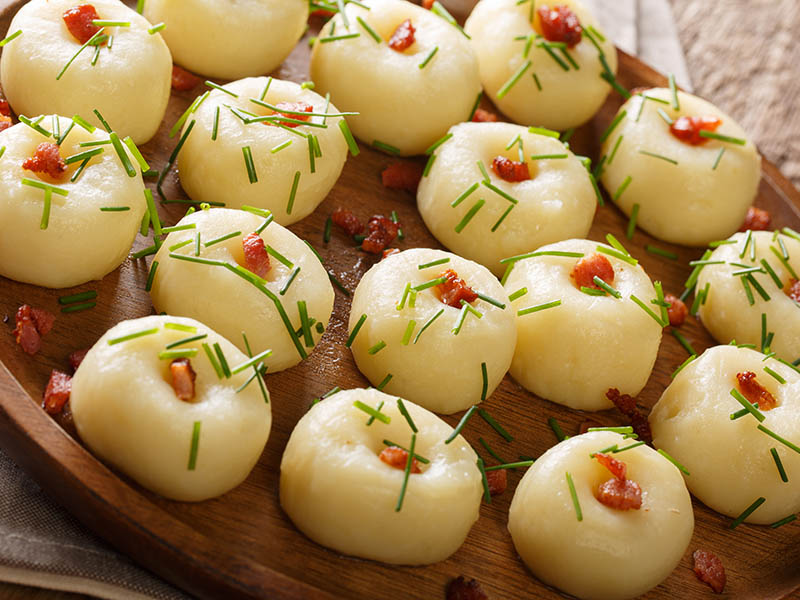
These lovely Dumplings came from Silesia, which is a region in the southwest of Poland. They are potato dumplings that are shaped differently from normal dumplings. They look like small lakes that are filled with bacon.
Since Kluski Slaskie has a dry texture, people do not often enjoy these dumplings by themself. Instead, they serve them with juicy dishes like Goulash and vegetable dishes, such as red cabbage salad or shredded beets salad.
8. Zurek (Sour Rye Soup)
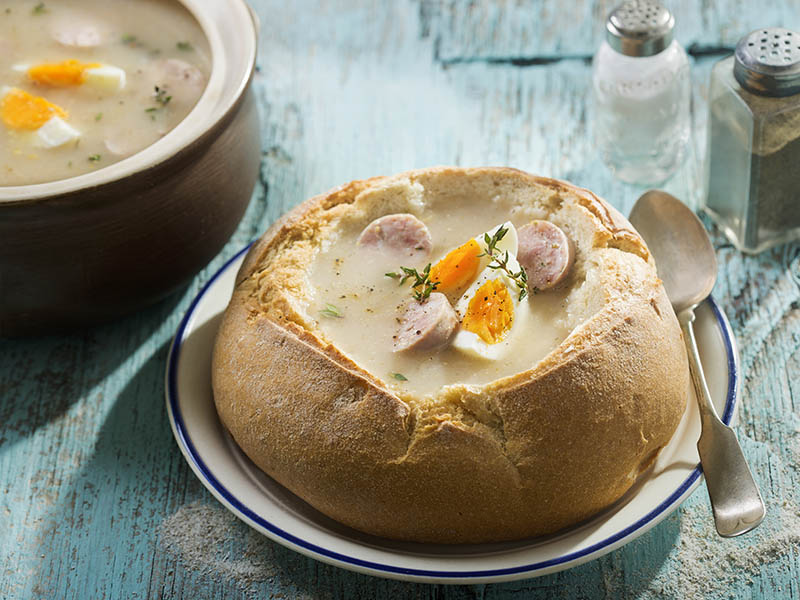
Zurek is a traditional Polish soup and is always served on Easter. Some said that it is the first dish in Polish cuisine. Its Polish name “ Żur” means “sour” in German.
There are 2 theories associated with the origin of this dish. Some say that a mean innkeeper invented it. Others posit that a poor old lady created it for her hard-working husband.
Let me talk more about its flavor. You know that it has a sour flavor. That one comes from fermented rye flour. It also has white sausage, boiled eggs, and smoked meat. Traditionally, people serve it in a bowl made of bread. It is peculiar but so fascinating.
Although I have mentioned that Zurek is typically served on Easter, you can enjoy it all year round. Another fascinating truth about this dish is that it can treat hangovers.
9. Bigos (Hunter’s Stew)
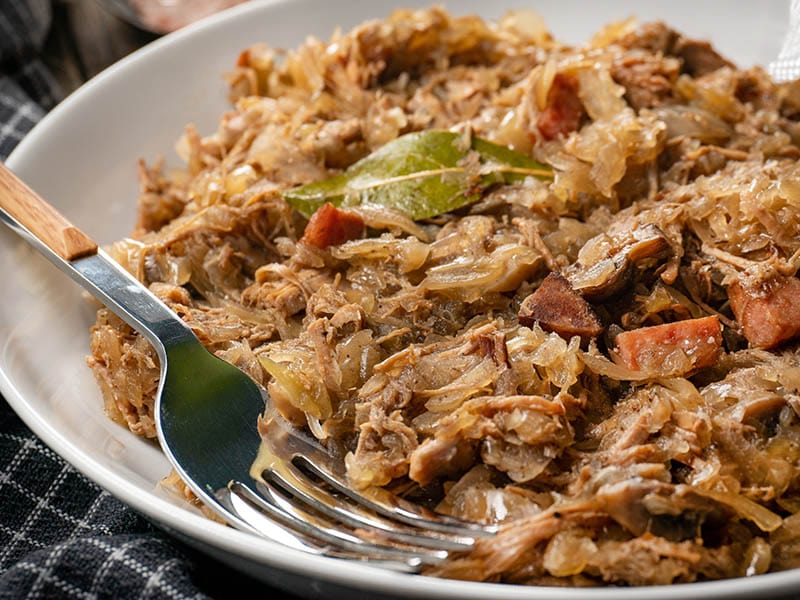
In the 14th century, Lithuanian Prince Wladislaus first served bigos in an after-hunting party. It is a stew containing the meat that is always available in the forest, namely venison, hare, pheasant, and boar. The meat was cooked with wine and sauerkraut.
Traditionally, Bigos has a very strong flavor. It can be sour, sweet, or even spicy. However, at the moment, people prefer making it lighter. Depending on how it is cooked, people serve it in both summer and winter.
People often cook Bigos 2 days ahead to make its flavor more profound. They will reheat it twice before eating it.
10. Flaki (Tripe Stew)
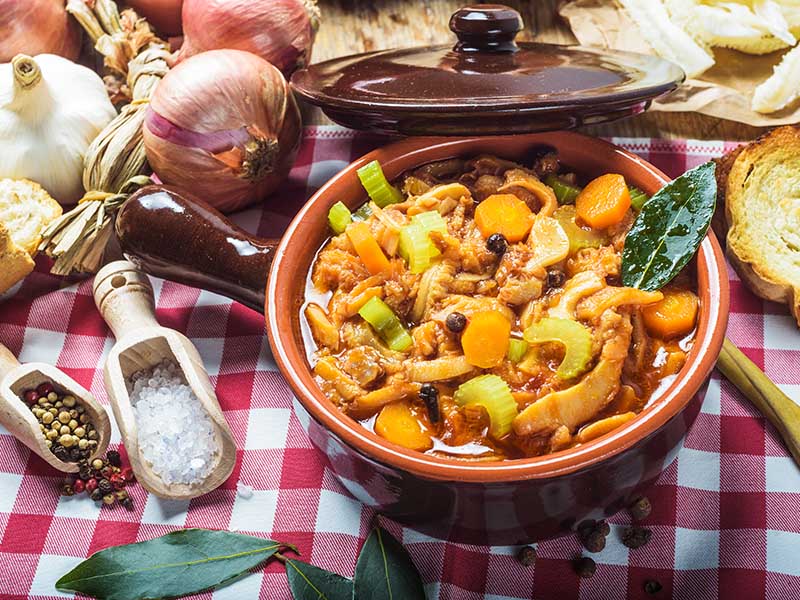
Flaki originated in Poland in the 14th century. It was the beloved food of King Władysław II Jagiełło. Many countries, such as France, Turkey, and Germany, adopted this recipe and developed their own versions.
Beef tripe is rarely a favorite ingredient in cooking. However, Polish people turned it into a delicacy. By slow-cooking, the tripe becomes tender and absorbs the flavor of other ingredients, namely celery root, and carrots, resulting in a flavorful stew that is universally loved.
Polish Desserts
You need some Polish desserts to sweeten your days in Poland. No matter whether you arrive in Poland in winter or summer, you can always be able to find a perfect sweet treat to enjoy.
11. Paczki (Doughnuts)

Tradition has it that Polish people eat Paczki on the Tuesday before Lent because that is the last day that they can eat rich food. It emerged in the medieval age when August III ruled the country.
Paczki is fried doughnuts filled with fruit or cream and smothered with sugar. It is a festive dessert that can be found in bakeries and stores 1 month before the last Tuesday before Lent.
If you arrive in Poland at that period, don’t forget to grab some to immerse yourself in the beautiful tradition.
Let’s learn a little bit about the history and characteristics of Paczki.
12. Kisiel (Strawberries Kissel)
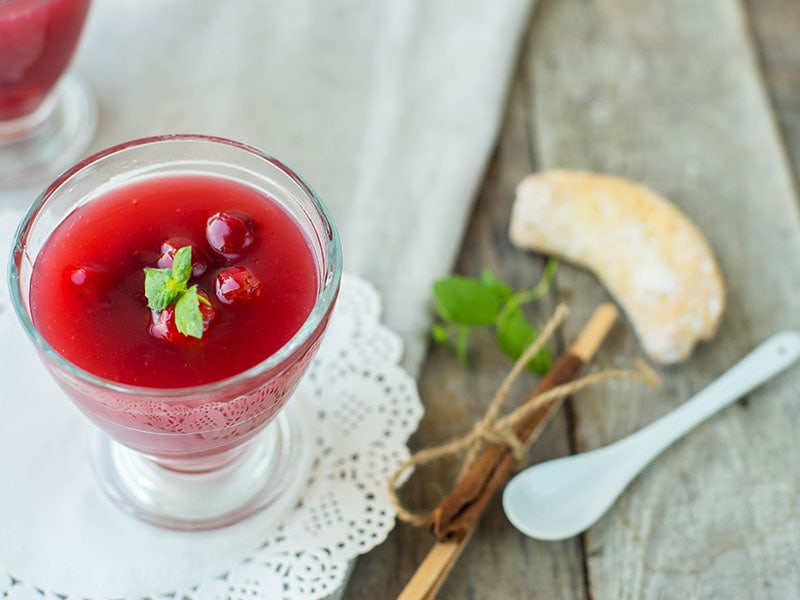
Kisiel is a popular drink in Poland and in other European countries. When and where it originated is still unexplored. Its name comes from the Slavic word for “sour.” It was first mentioned in the Russian Primary Chronicle in the 10th century.
This drink features juice of berries thickened with cornstarch or potato starch. In Poland, people make three kinds of Kisiel: gooseberry, strawberry, and raspberry Kisiel. This refreshing drink is the Polish’s favorite summer retreat.
You can enjoy kisiel both hot and cold. If its texture is not too thick, you can even drink it. Traditionally, it is served with semolina pudding, sweetened quark, pancakes, and ice cream.
13. Sernik (Cheesecake)
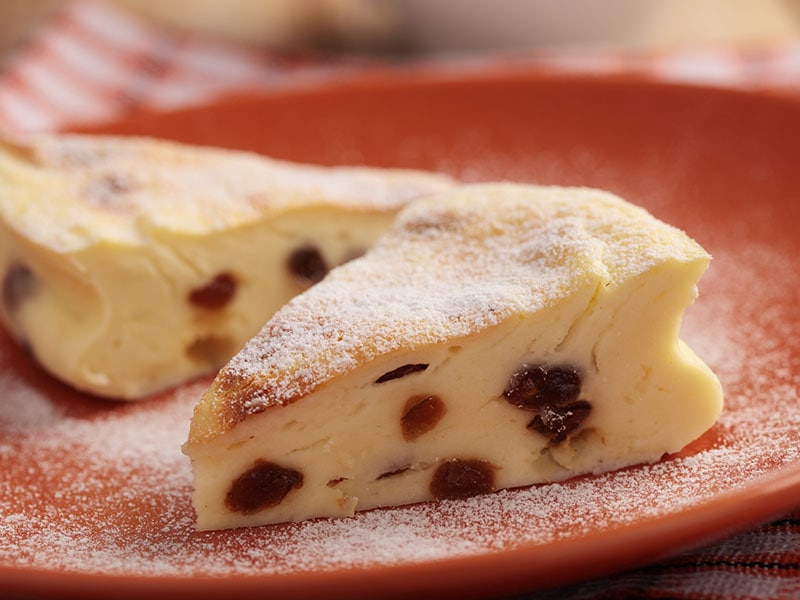
In the 17th century, after the Battle of Vienna, King Jan III Sobieski came back with a delicious type of cheese called Twaróg. Polish people then used it to create a cake with eggs and sugar. It is associated with Christian and Jewish traditions.
Sernik is baked or unbaked cheesecake. Notably, it has many variations, but the base ingredients remain the same. Some contain raisins, fruits, and chocolate sauce. Sometimes it is topped with fruits and jelly.
14. Faworki (Angel Wings)
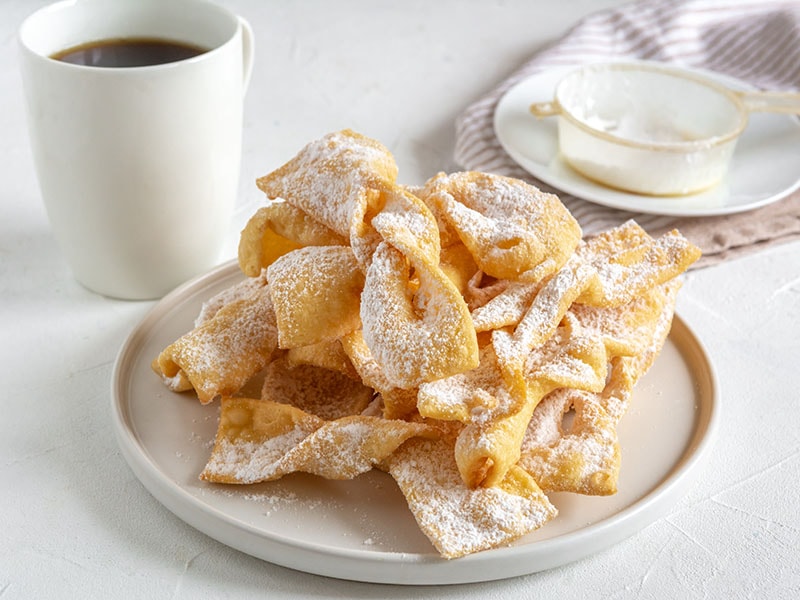
Faworki originated during the Ancient Roman Empire and has been spread to other European countries, including Poland. Similar to Paczki, it is a dessert served on the last Thursday before Lent, which is called “Fat Thursday.”
This dessert comes in the form of thin, twisted, and crispy dough covered with powdered sugar. In Polish, the name “Faworki” refers to the colorful ribbons on clothing. The wives of medieval knights often gave them before they came to the warzone.
15. Sekacz (Tree Cake)
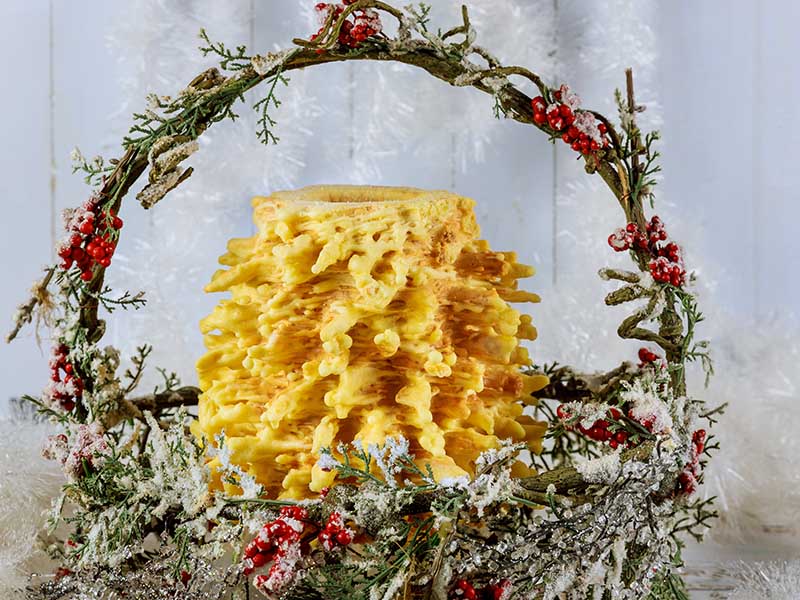
I bet that you’ve never seen a cake that is more sophisticated and impressive than Sekacz. It has the shape of a tree with plenty of branches. Few can manage to take their eyes off it.
Its origin is still unexplored, but it became prevalent in Poland during the Polish-Lithuanian Commonwealth.
Although Sekacz looks complicated to make, its ingredients cannot be simpler. It is made just from flour, sugar, butter, eggs, and cream. Due to its stunning appearance, people often buy it as a gift for weddings, Christmas and Easter.
16. Racuchy (Apple Pancakes)

Racuchy is an authentic Polish dessert. It is a staple of Christmas and New Year’s Eve and a perfect Polish breakfast recipe. It is best to enjoy it along with fish soup or mushroom soup.
Although it is called “Apple Pancakes” at present, the original version, called “Racuchy Drożdżowe,” only contains a dough topped with powdered sugar or sour cream. Apples are added later on, and it is now referred to as “Racuchy z Jablkami.”
17. Makowiec (Poppy Seed Roll)
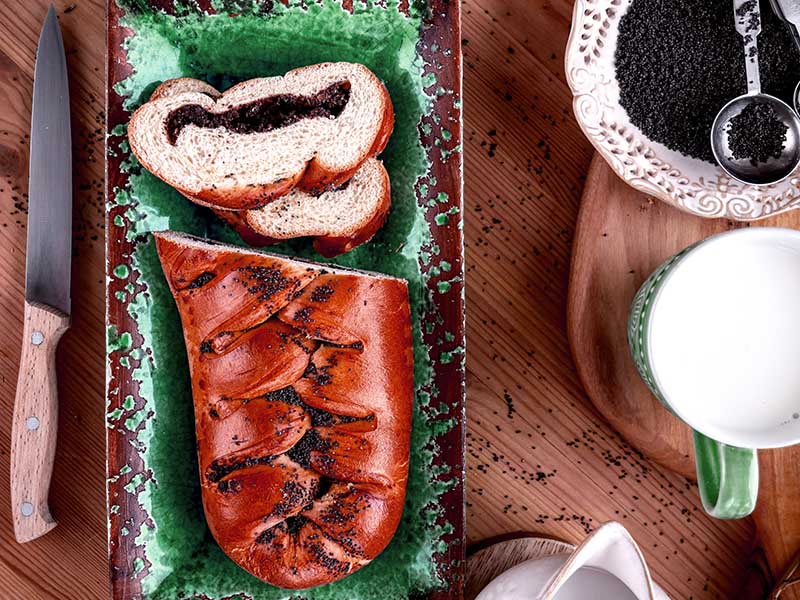
Everyone loves rolled cake. In Poland, Makowiec is the most beloved rolled cake. People fall for it so much that they even wrote a song for it.
This cake has a remarkably delicious flavor, thanks to poppy seeds. Polish people believe that poppy seeds are strongly associated with the afterlife. Legend has it when Makowiec is served; the dead will come back to visit the family.
Makowiec is not just a cake. It is an important element of Polish tradition. People value it as a cultural heritage.
18. Marcinki (St. Martin’s Croissant)

Legend has it that in 1891 when St. Martin was riding a horse, he lost a horseshoe. Then, a baker accidentally saw it and decided to create a cake that resembled its shape. So Marcinki was born.
It is a croissant filled with poppy seeds and topped with cream and almonds. It is so sweet and soft. Trust me! You can’t resist it. Nowadays, people always enjoy it on St. Martin’s Day, which is celebrated on the 11th of November every year.
19. Oscypek (Polish Cheese)
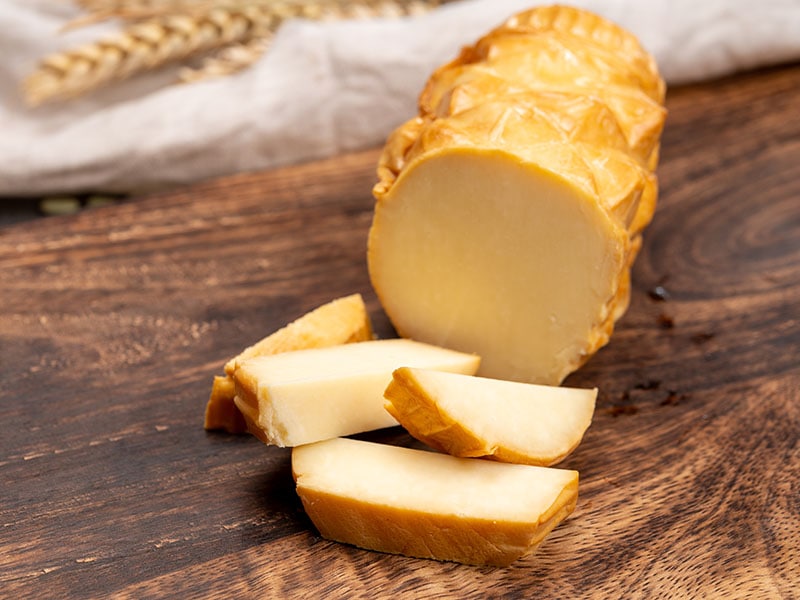
Oscypek is a beautiful kind of cheese that you can only find in Poland. It is particularly popular in the Podhale region, where it originated from. According to history, it was created by the Vlachs, a tribe living in Podhale around the 12th and 13th centuries.
This cheese is so special partly due to its fascinating appearance. The sheep’s milk is smoked then turned into an oval, barrel, or spindle shape. It has a slightly salty and smokey taste that is quite different from other kinds of cheese.
The process to produce Oscypek is so impressive that the shepherds and cheese makers are financially supported by the EU so that they can create more and more Oscypek.
Travelers are fascinated by Oscypek. Why not give it a try?
20. Mazurek (Easter Sheet Cake)

This beautiful cake is no doubt the perfect treat for Easter. It is a flat and thin pastry that is decorated sophisticatedly with dried fruits and nuts. You will see it at almost all Easter parties. Its extremely sweet flavor bonds people together.
Mazurek is mainly associated with Poland. But it actually came from another place. According to one theory, it possibly came in the 17th century after the spice trade route from Turkey. Nowadays, it is the iconic dish of Tatra Mountains. People grill it and enjoy it with cranberry jam.
21. Pierniki (Gingerbread Cookies)

If you come to the city of Toruń, you will see Pierniki in all bakeries. Pierniki is a kind of gingerbread cookie that originated in the Middle Ages. However, the first version of gingerbread came from ancient Greeks and Egyptians.
Pierniki is also called Christmas cookies. Its name is derived from the Polish word “pieprz” indicating its peppery flavor. It is delicious, beautiful, and carries Polish tradition.
A similar version of Pierniki is Pepperkaker – a signature food of Norwegian at Christmas. These are also gingerbread cookies, but the components and shape might vary. Overall, enjoying Pierniki will be a very exciting experience. You can also buy it as a gift to give to the one you love.
Polish Drinks
Polish is famous for its collection of alcoholic drinks and coffee. I will take you through the most beloved beverages and the story behind them. Read on!
22. Polish Vodka

If Polish people are asked about their national drink, the answer will be vodka. In terms of alcoholic drinks, vodka is unbeatable. Its strong sweetness and spiciness will bring you the most extreme experience.
Vodka came to Poland in the Middle Ages. Some said that it originated in Poland. But up to now, this has not been confirmed.
At weddings, Polish people have a tradition called “Bitter Vodka.” Since it is bitter, the bride and groom are asked to kiss each other to make it sweeter. At the same time, people will sing the song “Bitter Vodka.”
23. Mead (Honey Wine)
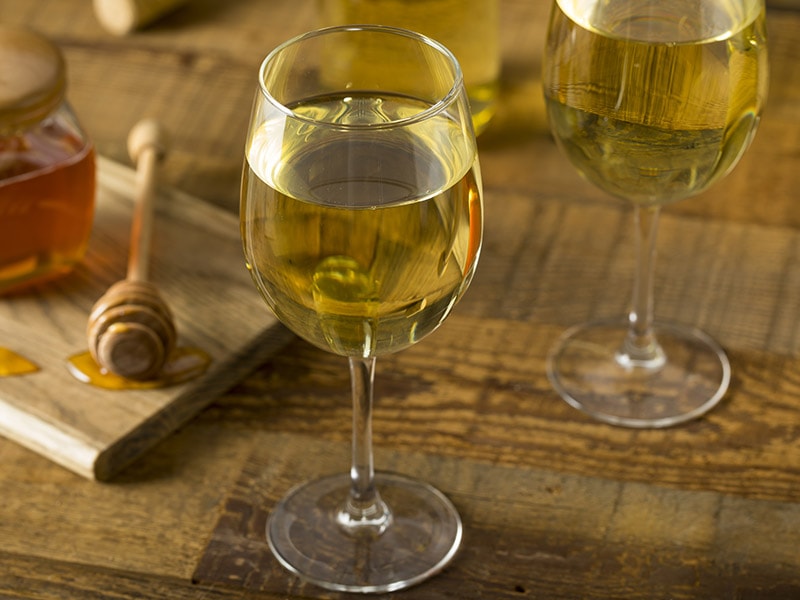
Polish people love the sweetness of honey, so they made a fermented drink from it. However, the original recipe actually came from China, Egypt, India, and Greece. The exact country is still under debate but this drink was first documented 4000 years ago in India.
Most people say that Mead tastes much like wine but with a strong honeyed note. Although its English name is “Honey Wine,” it is not classified as a type of wine or even beer. Mead is unique on its own.
24. Podpiwek (Sour Beer)
Podpiwek is very popular among Polish women and children because of its low alcohol content (up to 0,5%). You can hardly find Podpiwek in America because it is rather a local drink. It is made by fermenting hops, grain coffee, yeast, sugar, and water.
According to history, Podpiwek used to be common among Polish peasants when they wanted to find something to beat the heat. But now, it is the favorite drink of the entire country.
25. Polish Coffee

There is an interesting story associated with Polish coffee. It tells that when the Battle of Vienna occurred in the 17th century, Jerzy Franciszek Kulczycki brought plenty of coffee beans to Poland. But at first, it was considered the drink of evil because of its black color.
However, nowadays, coffee is one of the most popular drinks in Poland. They even prefer it more than tea. It is a part of the morning routine of local people.
26. Bimber (Polish Moonshine)
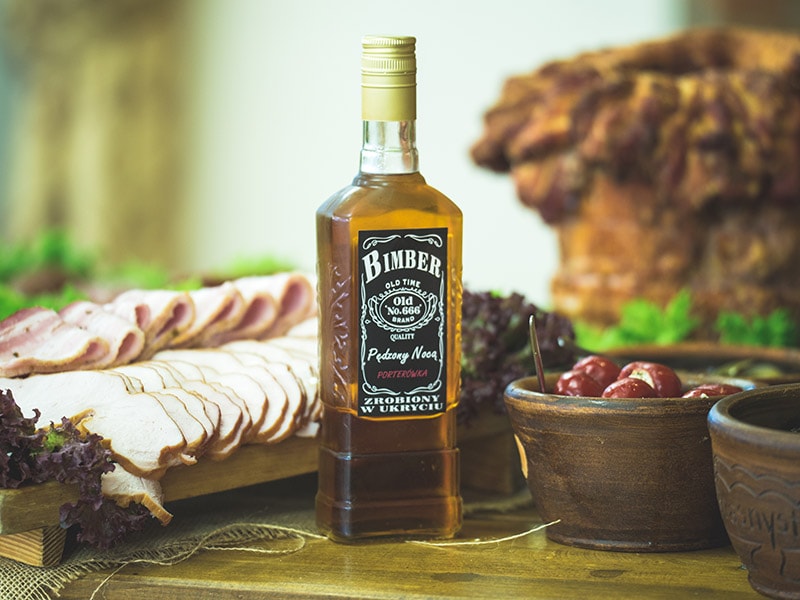
Bimber has long been a favorite drink of Polish people despite its status as an illegal drink. It emerged in Podlasie in the 19th century when the authorities did not allow alcoholic drinks. At present, it is produced legally, and its popularity is always on the increase.
Rye or yeast is used to make this delicate drink. You will always see homemade versions, but I promise that their taste is incredibly delicious. If not, then how could it survive as an illegal drink?
Get Yourself Ready To Enjoy The Best Polish Delicacies
Have you chosen your favorite dishes to try in Poland? You can find them easily since they are all popular foods. If you like this article, click the “share” button to support me and help this post reach more people.
I am sure that your experience in Poland will be much more fascinating if you try these dishes. Start with a fulfilling breakfast, refuel yourself in the middle of the day, and get a hearty and warm dish for dinner. Don’t forget to enjoy some desserts to complete the experience!.
